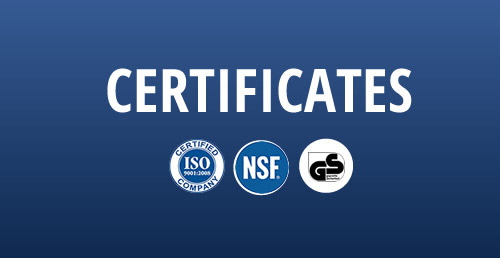Wedge Bolt Concrete Anchors for Secure and Durable Building Applications
Wedge Bolt Concrete Anchors A Comprehensive Guide
Wedge bolt concrete anchors are a crucial component in construction, providing reliable and sturdy fastening solutions for various applications. These anchors are specifically designed to secure objects like steel beams, guardrails, and machinery to concrete surfaces, ensuring both safety and stability in construction projects. This article aims to outline the functionality, types, installation process, and considerations when using wedge bolt anchors.
Understanding Wedge Bolt Concrete Anchors
Wedge bolt anchors primarily consist of three main parts a threaded rod, a wedge, and a nut. The design employs a simple yet effective mechanism that allows the anchor to expand inside the concrete when the nut is tightened, creating a strong grip. The wedge-shaped design is key to this mechanism, as it allows the anchor to lock firmly into the concrete, preventing any movement or loosening over time.
Types of Wedge Bolt Anchors
There are several types of wedge bolt concrete anchors available in the market, each varying in size, material, and design. Here's a breakdown of some common types
1. Standard Wedge Anchors These are the most common types used in various applications. They are available in different diameters and lengths, making them suitable for light to heavy loads. Typically made from carbon steel with zinc plating, they offer moderate corrosion resistance.
2. Stainless Steel Wedge Anchors For environments prone to moisture or harsh conditions, stainless steel wedge anchors are ideal. Their corrosion-resistant properties make them suitable for outdoor applications, marine environments, and areas with high humidity.
3. High-Strength Wedge Anchors These anchors are designed for heavy-duty applications. Made from high-strength steel, they can support heavier loads and are often used in industrial or commercial settings.
4. Expansion Anchors While similar to wedge bolts, expansion anchors operate slightly differently. They expand against the sides of the drilled hole in the concrete, providing a strong hold. These can be used where a more versatile anchoring solution is needed.
Installation Process
Installing wedge bolt concrete anchors is a straightforward process, but it requires careful attention to detail
1. Preparation Begin by determining the exact location where the anchor will be installed. Make sure to mark the spots accurately.
wedge bolt concrete anchors

2. Drilling Use a hammer drill with the correct masonry bit to create a hole in the concrete. The diameter of the hole should match that of the wedge anchor, and the depth should be equal to or slightly deeper than the length of the anchor.
3. Cleaning the Hole After drilling, clean out the hole to remove any dust and debris. This step is crucial to ensuring a firm grip for the anchor.
4. Inserting the Anchor Insert the wedge bolt anchor into the hole, ensuring it is properly aligned.
5. Tightening Use a wrench to tighten the nut. This is where the wedge mechanism activates, expanding the anchor and securing it firmly in place. Ensure that the anchor is tightened to specifications to prevent any weakening.
6. Final Inspection Once installed, inspect the anchor to ensure it's properly secure and has no play.
Considerations When Using Wedge Bolt Anchors
While wedge bolt anchors are highly effective, certain considerations should be taken into account
- Concrete Condition Ensure that the concrete is not cracked or compromised, as this can affect the anchor's performance.
- Load Requirements Always calculate the load that the anchor will bear and choose the appropriate size and type of anchor accordingly.
- Environmental Factors Consider the environment in which the anchors will be used. For example, using standard steel anchors in wet environments can lead to corrosion, necessitating the use of stainless steel options.
- Correct Tools Ensure you have the right tools for installation, including a hammer drill, appropriate masonry bits, and a torque wrench.
In conclusion, wedge bolt concrete anchors are indispensable in the construction industry for their strength and reliability. Understanding their types, installation process, and necessary considerations will ensure you select the right anchor for your project, leading to successful and durable constructions. With proper installation and maintenance, wedge bolting systems can provide long-lasting support and safety for a variety of applications.
-
Weatherproof Plastic Expansion Anchors for OutdoorNewsJun.06,2025
-
Sustainability in the Supply Chain: Eco-Friendly TEK Screws ProductionNewsJun.06,2025
-
Load-Bearing Capacity of External Insulation FixingsNewsJun.06,2025
-
Double Head Bolts: Enhancing Efficiency in Industrial MachineryNewsJun.06,2025
-
Corrosion Resistance in Chipboard Screws: Coatings for Wholesale DurabilityNewsJun.06,2025
-
Butterfly Toggle Bolts : Enhancing Structural ResilienceNewsJun.06,2025
